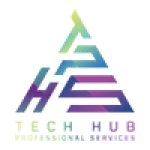*COURSE DETAILS* :
*COURSE DETAILS* :
| Training type | Instructor-led Online |
|---|---|
| Facilities | Industry Expert Trainer | 24*7 Virtual Lab Access | Study Materials |
| Batch Strength | 10 |
| Timings | 2 – 4 Hours in a day |
| Duration | 40 Hours |
| Fee | $18.05 |
| Upcoming | Upcoming Class |
Course overview
Skills measured
- Perform solution envisioning and requirement analyses (35–40%)
- Architect a solution (40–45%)
- Implement the solution (15–20%)
Functional groups
Perform solution envisioning and requirement analysis (35–40%)
- Initiate solution planning
- Evaluate business requirements
- Identify Microsoft Power Platform solution components
- Identify other components including existing apps, AppSource apps, third-party components, and components from independent software vendors (ISV)
- Identify and estimate migration and integration efforts
Identify organization information and metrics
- Identify desired high-level organizational business processes
- Identify business process improvement opportunities
- Assess an organization’s risk factors
- Review key success criteria
Identify existing solutions and systems
- Evaluate an organization’s enterprise architecture
- Identify data sources needed for a solution
- Define use cases and quality standards for existing data
- Identify and document an organization’s existing business processes
Capture requirements
- Refine high-level requirements
- Identify functional requirements
- Identify non-functional requirements
- Confirm that requirements meet an organization’s goals
- Identify and document an organization’s desired business processes
- Perform fit/gap analyses
- Determine the feasibility of meeting specific requirements
- Evaluate Dynamics 365 apps and AppSource options to solve requirements
- Address functional gaps through alternate solutions
- Determine the scope for a solution
Architect a solution (40–45%)
Lead the design process
- Design the solution topology
- Design customizations for existing apps
- Design and validate user experience prototypes
- Identify opportunities for component reuse
- Communicate system design visually
- Design application lifecycle management (ALM) processes
- Design a data migration strategy
- Design apps by grouping required features based on role or task
- Design a data visualization strategy
- Design an automation strategy that uses Power Automate
Design the data model
- Design tables and columns
- Design reference and configuration data
- Design relationships and relationship behaviors
- Determine when to connect to external data versus import data
- Design data models to address complex sets of requirements
- Design integrations
- Design collaboration integrations
- Design integrations between Power Platform solutions and Dynamics 365 apps
- Design integrations with an organization’s existing systems
- Design third-party integrations
- Design an authentication strategy
- Design a business continuity strategy
- Identify opportunities to integrate and extend Power Platform solutions by using Microsoft
Azure
Design the security model
- Design the business unit and team structure
- Design security roles
- Design column security
- Design security models to address complex sets of requirements
- Determine security model management policies and processes
- Identify Azure Active Directory groups and app registrations required to support a solution
- Identify data loss prevention (DLP) policies for a solution
- Determine how external users will access a solution
Implement the solution (15–20%)
Validate the solution design
- Evaluate detail designs and implementation
- Validate security
- Ensure that the solution conforms to API limits
- Assess the solution performance and impact on resources
- Resolve automation conflicts
- Resolve integration conflicts
Support go-live
- Identify and resolve potential and actual performance issues
- Troubleshoot data migration
- Resolve any identified issues with deployment plans
- Identify factors that impact go-live readiness and remediate issues
- 24*7 Lab Access
- Online Training
- Instructor-led Training
- One-to-one Sessions
- Advanced Lab Equipments
